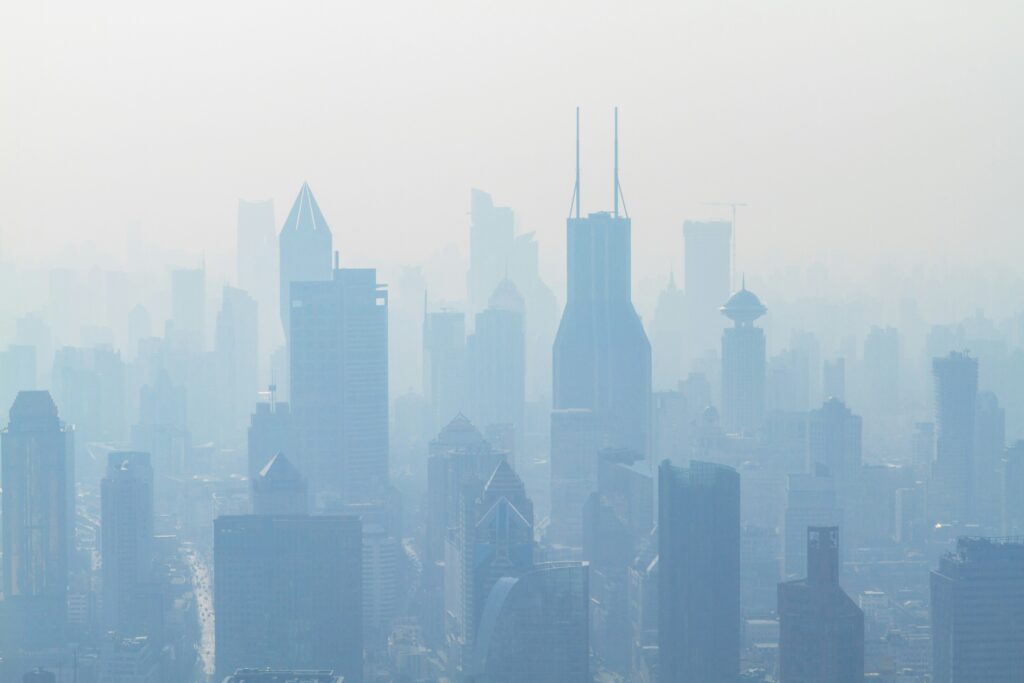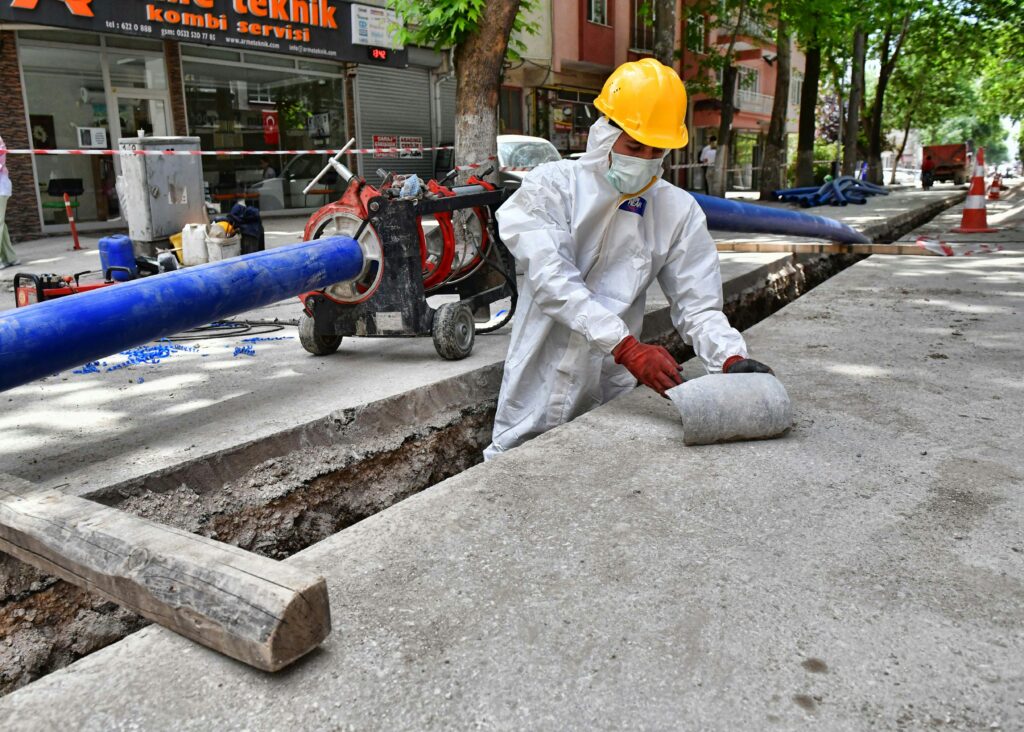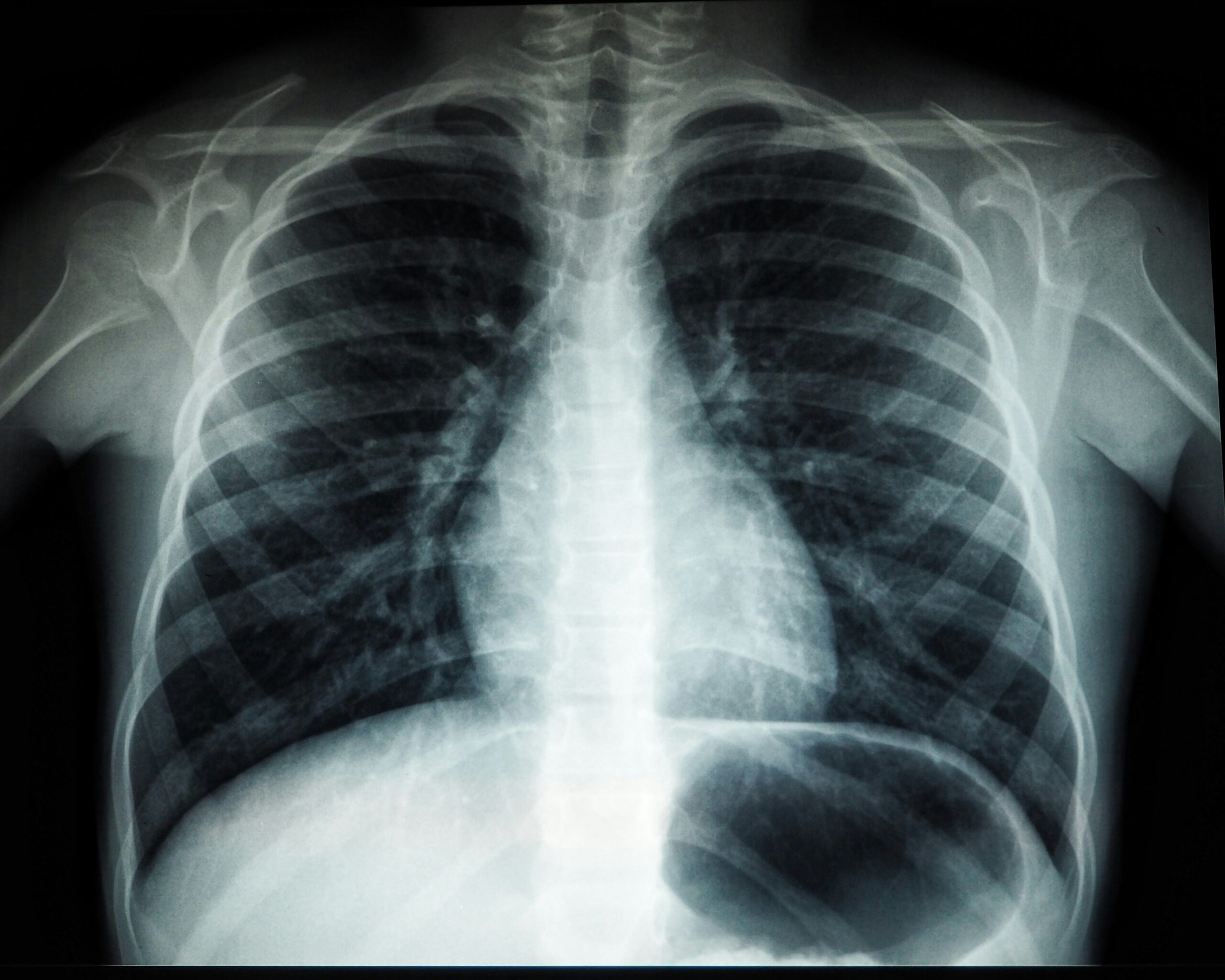Lung cancer is a leading cause of cancer-related deaths globally for both men and women, it is responsible for approximately 2 million new cases and 1.8 million deaths annually. In 2020, it represented 11.4% of all cancers diagnosed worldwide. A significant challenge with lung cancer is late diagnosis, as noticeable symptoms often only appear in later stages. The average age at primary diagnosis is 70, at which point the cancer is frequently advanced or has spread to other parts of the body.
The average overall 5-year survival rate for lung cancer is very low, 10-20%, although the survival rate could be higher if diagnosed in earlier stages. Over the past ten years, lung cancer cases have risen substantially, particularly in developing nations. This increase is largely attributed to higher rates of risk factors, primarily smoking, air pollution and workplace exposure to harmful substances like asbestos and vinyl chloride. Approximately two-thirds of lung cancer deaths globally can be linked to these environmental risk factors.
The most effective way to lower your risk of lung cancer and improve survival is through lifestyle changes. This includes quitting smoking entirely and removing yourself from smoking environments, avoiding exposure to certain chemicals, dust and radiation, and maintaining a healthy diet.
In this article, I will be discussing in further details the risk factors contributing to lung cancer, and what you absolutely must avoid. This isn’t about scare tactics, it’s about equipping you with the information you need to protect yourself and your loved ones, and if you or someone you know is at a high risk or has already been diagnosed, being armed with this information and making the necessary changes may improve the symptoms, response to treatment and potentially survival as well. Additionally, please refer to this article for detailed information regarding integrative and holistic treatments for lung cancer.
How do my genes or family history affect my Risk of lung cancer?
Lung cancer development is influenced by a combination of environmental factors, somatic events, and genetic factors. While environmental factors like smoking and air pollution are strongly linked to lung cancer, genetic predisposition also plays a role. Studies on twins and families have provided evidence for this genetic influence, and research has highlighted the complex interplay of environmental and genetic factors. That being said, only approximately 8% of all lung cancers are considered inherited or due to genetic predisposition.
Twin studies, comparing monozygotic (identical) and dizygotic (fraternal) twins, can play an important role in deciding the impact of genetics VS the environment, it can help to some extent answering the ever-asked question of nature vs nurture.
- One study suggested that shared environments and lifestyles, particularly smoking habits, are more influential than genetic factors in the familial patterns of lung cancer observed in twins. Another study also indicated that genetic factors do not strongly predict lung cancer risk in twins.
- Conversely, a study of 45,000 twins (both identical and non-identical) found increased lung cancer risk in both groups: 7.7-fold for identical and 6.7-fold for fraternal twins. This suggests a combined influence of both genetic and environmental factors, considering twins share very similar environment.
On the other hand, Studies on families, particularly first-degree relatives (parents, siblings, children), have shown a connection between family history and lung cancer risk.
- Having an affected first-degree relative, early-onset lung cancer in the family, and multiple affected family members all are factors that significantly increase lung cancer risk, even for non-smokers. This highlights a potential genetic component, even if the specific genes are not yet fully identified.
- However, this increased risk can be attributed to shared environmental factors (like smoking or exposure to same chemical or pollution within the same household). Therefore, within the same family who share the same living space, it is difficult to specify exactly how much risk is due to genes and how much is due to environmental impact.
History of lung disease and inflammation
Certain pre-existing lung conditions significantly elevate the likelihood of developing lung cancer. For instance, individuals with emphysema face a risk more than double that of those without, while chronic bronchitis increases the risk by nearly half. Notably, even individuals who have never smoked but have a history of emphysema, pneumonia, or tuberculosis demonstrate a higher risk compared to those without such a history.
These lung conditions are often associated with higher levels of inflammation which plays a critical role in the development and progression of lung cancer. Cancer cell growth, the formation of new blood vessels that feed tumors, the spread of cancer, and how tumors respond to treatments are all influenced by inflammatory processes. Studies have revealed that specific inflammatory markers in the body are linked to lung cancer risk, so higher levels of pro-inflammatory substances (CRP) are associated with increased risk, while higher levels of anti-inflammatory substances (interleukin-1 receptor antagonist) are associated with reduced risk.
A large analysis including 1918 lung cancer cases from 10 studies indicated that for every unit increase in a particular inflammatory marker (CRP), the risk of lung cancer rose significantly. Another study showed that those with the highest levels of another inflammatory marker, interleukin-6 (IL-6), were significantly more likely to develop lung cancer.
Beyond predicting risk, inflammation also appears to influence the treatment responses and survival of lung cancer patients. A recent study reported that the abondance of these inflammatory markers (CRP, IL-6) can increase resistance to certain therapies (Immune checkpoint inhibitor-based therapies) in patients with non-small cell lung cancer, leading to worse prognosis.
Another earlier study using a specialized inflammation index showed that patients with higher levels of inflammation had significantly shorter survival times compared to those with lower inflammation. The link between inflammation and lung cancer is further supported by observations that long-term use of some anti-inflammatory medications may reduce lung cancer risk.
Certain Non-Respiratory Infections
Certain viral and bacterial infections are suspected to play a role in lung cancer development. People with HIV have a significantly higher risk of lung cancer, possibly due to the virus itself, increased infections, and immune system issues.
Specific strains of the human papillomavirus (HPV), known to also increase the risk of cervical, vulvar, oral, head and neck, and anal cancers, may also contribute to lung cancer, though research on this is ongoing. There is also emerging research suggesting a potential link between a common stomach bacteria (H. pylori) and lung cancer risk, though more studies are needed.
Environmental and lifestyle factors
Lung cancer development is influenced by a combination of environmental and occupational factors. These can be grouped into chemical exposures, air pollution (both outdoor and indoor), specific materials like asbestos, metallic substances, radiation, and risks associated with particular jobs.
Smoking
Smoking is the primary risk factor for lung cancer. In the United States, smoking accounts for 80% to 90% of lung cancer deaths, although only some long-term smokers develop the disease. The likelihood of developing lung cancer depends on the duration and intensity of smoking, along with other contributing factors. Compared to people who do not smoke, those who smoke are 15 to 30 times more likely to get lung cancer or die from lung cancer. Even light or occasional smoking increases this risk, with the risk escalating with increased duration and intensity of smoking. While quitting smoking reduces lung cancer risk compared to continued smoking, former smokers still have a higher risk than those who never smoked. However, ceasing smoking at any point in life can decrease the probability of developing lung cancer.
Tobacco smoke comprises over 7,000 chemicals, many of which are poisonous, and at least 70 are known carcinogens. Tobacco smoke contains polycyclic aromatic hydrocarbons (PAHs), DNA-damaging carcinogens that interact with DNA, forming mutagenic DNA adducts that can initiate lung cancer. Other tobacco products, such as cigars and pipes, also elevate lung cancer risk.
Second-hand Smoke
Breathing in other people’s smoke (second-hand or passive smoke) is a known cause of cancer. The risk increases with the amount and duration of tobacco smoking. One study showed a nearly four times higher risk of lung cancer in people exposed to second-hand smoke as children.
Air Pollution

Breathing polluted air, both outdoors and indoors, increases the risk of lung cancer.
Outdoor Air Pollution
Sources include industry, mining, waste disposal, and vehicle exhaust. Some components of vehicle emissions are known or probable carcinogens. People living in cities are generally at higher risk than those in rural areas.
Agricultural activities are also a major source of very small particles in the air (PM2.5) in many regions. Predictions indicate that deaths linked to outdoor air pollution could double by 2050, with increasing levels of PM2.5 which directly increases lung cancer risk.
Indoor Air Pollution
Burning coal for heating and cooking releases harmful particles and gases like benzene, carbon monoxide, formaldehyde, and PAHs. Indoor air pollution from burning coal is well-known cause of cancer. One study showed that more smoke indoors is linked to a 62% higher risk of lung cancer. People with a specific genetic variation (T-genotype of HIF-1α rs2057482) and are exposed to this pollution are significantly more susceptible to the more fatal type of lung cancer (small cell carcinoma lung cancer).
Ionizing Radiation
This includes X-rays, gamma rays and radon.
- X-rays can be exposed to during various forms of medical imaging, security screening, industrial imaging and research equipment.
- Gamma rays are used in sterilizing medical equipment, cancer radiotherapy, PET scans medical imaging, and in the nuclear industry.
- Radon, a natural gas from soil and rocks, is the main source of natural radiation exposure. Studies have shown a link between radon in homes and lung cancer, consistent with findings from studies on miners exposed to radon. Radon could be most commonly found in your home in basements and crawl spaces, well water, and certain construction materials, proper frequent ventilation of the house is necessary to avoid accumulation of radon and exacerbation of the issue.
Chemical Exposures
Exposure to certain chemicals in workplaces and agricultural settings can significantly elevate lung cancer risk.
- Pesticides: These chemicals, used in farming and public health, are a concern. Exposure primarily happens through skin contact and breathing in the pesticide during handling and application. A 2021 study reported a significant association between occupational exposure to pesticides and an increased risk of developing lung cancer. individuals occupationally exposed to pesticides had a 1.65 to 2.84 times higher rate of lung cancer compared to those not exposed.
- Some pesticide groups, including chlorophenols (CPs), dioxins, and related phenoxyacetic acids (PAs), are known to cause cancer in the lungs. A large review (meta-analysis) of five studies, involving almost 28,000 workers in plants producing CPs and similar compounds, found an 18% increase of lung cancer deaths compared to the general population. However, the picture is not fully clear when it comes to the amount or length of pesticide exposure and how much that would increase the lung cancer risk.
- Vinyl Chloride: This chemical is used in the production of polyvinyl chloride (PVC) plastics. Studies have shown a 20% increased risk of lung cancer in workers involved in packaging and bagging PVC dust and those exposed to vinyl chloride itself. However, exposure levels for the general population are typically very low, meaning the risk for most people is minimal. That being said, vinyl chloride is increasingly being used in construction materials, such as flooring, roofing and windows which may increase the exposure of the general public when these materials are disturbed.
Specific Materials
- Asbestos: This material, once used in insulation, is a known carcinogen. All types of asbestos are dangerous. Inhaling asbestos fibers is the main route of exposure. While occupational exposure is well-known, household exposure can occur from dust brought home on workers’ clothes or from deteriorating asbestos-containing products. Residential exposure can happen near asbestos mines or factories or from natural erosion of asbestos-containing rocks. It’s hard to accurately measure non-occupational exposure. Studies have linked asbestos exposure to lung cancer and mesothelioma (a cancer of the lining of the lungs). One study of heavily exposed workers showed a 74% increased risk of lung cancer, with a similar increased risk in those with lower exposure for up to 20 years. Longer asbestos fibers are generally more dangerous.
- Metals: Certain metals can contribute to lung cancer. Arsenic, found in some mining and industrial settings and sometimes in drinking water, is a known lung carcinogen. Beryllium is considered a probable human carcinogen. Exposure to hexavalent chromium has been linked to a significantly increased risk of lung cancer (a nearly doubled risk). Exposure to nickel compounds in workplaces is also linked to lung cancer.
Occupational Risks

Certain jobs carry increased lung cancer risk due to specific exposures:
- Construction Industry: Construction workers are exposed to many potentially harmful substances. Many studies have found higher lung cancer rates in this group, especially in certain trades like bricklaying, carpentry, painting, and roofing.
- Ceramic Industry: Studies on workers making ceramic fibers haven’t shown a higher rate of lung cancer risk or deaths. However, the lung disease silicosis, which is common in this industry as a result of being exposed to silica, can indirectly increase the risk.
- Painters: Painters are exposed to various chemicals in paints and varnishes. Studies suggest a higher risk of lung cancer, especially with exposure to wood varnishes and stains.
- Sandblasters: Sandblasting exposes workers to crystalline silica, a known lung carcinogen. One study has shown a 60% increased risk of lung cancer in sandblasters.
- Bricklayers/Masons: These workers are exposed to substances like asbestos and silica, increasing their risk of lung cancer. One Italian study found a significantly higher risk of lung cancer, particularly certain aggressive types (squamous cell and small cell), in bricklayers.
- Glass Factory Workers: Workers producing glass have been shown to have higher lung cancer risks in many studies.
- Bartenders: Lung cancer in bartenders is likely linked to smoking, alcohol, and especially to second-hand smoke in bars. A study found levels of nicotine in bars, casinos, and bowling alleys were 2.4 to 18.5 times higher than in residences or offices.
- Coal Gasification and Coke Production: Workers in these industries have a higher risk of lung cancer due to exposure to Polycyclic aromatic hydrocarbons (PAHs), which are particles that are made when substances are burned. Additionally, Coal gasification workers are also exposed to substances such as arsenic, silica, asbestos, lead, nickel and cadmium.
- Traffic Police: Traffic police are exposed to vehicle exhaust pollutants like benzene and PAHs. Studies suggest an increased lung cancer risk in this group.
- Uranium Miners: Miners exposed to high levels of radon have a well-established increased risk of lung cancer. A large study of uranium miners found a strong link between even lower levels of radon exposure and lung cancer. Different types of lung cancer were linked to radon exposure to varying degrees, with the aggressive type small cell lung cancer showing the strongest association.
- Trucking industry: Truck drivers, bus drivers, shipyard workers, and railroad workers are exposed to diesel exhaust, considered a probable human carcinogen. A study reported that this group have a lifetime excess risk 10 times higher than the excess risk allowed by Occupational Safety and Health regulatory bodies.
- Rubber Industry Workers: Workers in rubber manufacturing, especially tire production, are exposed to chemicals like 1,3-butadiene and benzene, both known carcinogens. Studies have shown a slightly increased risk of cancer in this group.
Certain supplements
This section may be surprising to read, however, this is a perfect example of why it is crucial to do your research and discuss the use of any supplements with your chosen healthcare provider as not all supplements are beneficial and what benefit some may hurt others based on their immunological response (allergy) and medical history, this doesn’t only apply to supplements but to herbal medicine and definitely all pharmaceuticals as well.
The following findings are confusing, how can antioxidants increase the risk of cancer! While they normally work for fighting other cancers, lung cancer is a special case. Long story short, the current theory on this strange correlation, is that antioxidant often protect cells, but in the presence of smoke or asbestos, it can have the opposite effect. This is because these substances create an environment of increased “oxidative stress” and reduced natural defenses in the lungs, where these vitamins can be converted into pro-oxidants instead of antioxidants.

The reason why it varies between obtaining antioxidants from foods vs supplements is essentially because your body might process and use vitamins and minerals better when you get them from food rather than added supplements. The natural mix of nutrients in meals could work together to provide health advantages that you just don’t get from having a single form of a vitamin. Natural foods in normal doses tend to have a better ability to regulate each others’ functions. Supplements that were found to potentially increase the risk of lung cancer in specific populations include:
Beta-carotene
Research consistently shows that beta-carotene supplements, often touted for their antioxidant properties, do not protect against lung cancer and may even increase the risk for some specific populations (smokers and asbestos workers).
Vitamin A
Studies on vitamin A supplementation and lung cancer have revealed concerning trends, particularly among smokers and individuals exposed to asbestos. Vitamin A supplementation was associated with increase risk of both cancer incidence and mortality.
Vitamin C
Observational studies on vitamin C and lung cancer have produced mixed results, with some suggesting a benefit from dietary vitamin C. However, stronger evidence from randomized controlled trials indicates that vitamin C supplements likely have little to no effect on lung cancer risk and may even increase the risk in some cases. It appears that getting vitamin C through food sources might be more beneficial in reducing lung cancer risk while taking supplements may have no effect, or potentially even increasing the risk in some populations (Women above 40), according to one study.
So how to reduce your risk of lung cancer?
Alright, let’s wrap this up! We’ve talked about the risks of developing lung cancer, and I know this can feel overwhelming. But understanding those risks is the first step towards taking control of your health.
We’ve discussed how environmental and occupational exposures play a significant role in lung cancer development. It’s not just about smoking; it’s about the air we breathe, the places we work, and even the legacy we inherit from our parents.
Think of it this way: our bodies are like gardens. We need to protect them from harmful elements. First and foremost, we’re talking about tangible, avoidable exposures.
If you smoke, quitting is the single most important thing you can do for your lung health. Avoiding secondhand smoke and minimizing exposure is also essential.
Since inflammation plays such a significant role, adopting a healthy lifestyle is key. This means eating a balanced diet rich in fruits and vegetables, maintaining a healthy weight, and engaging in regular physical activity. These habits can help reduce inflammation.
When it comes to infections, prevention is paramount. Getting vaccinated against tuberculosis (TB) and human papillomavirus (HPV) can significantly reduce your risk. Vaccination is most effective when administered before exposure, so talking to your doctor about the recommended vaccination schedule is important. To avoid exposure to infections in general, practice good hygiene, like frequent handwashing, and be mindful of close contact with people who are sick or in areas at high risk, and practice safe sex.
It’s also essential to be aware of environmental factors that can contribute to lung disease
Ionizing radiation, like radon, is a silent killer. Test your home, especially if you live in an area known for radon. UV radiation isn’t just a skin cancer risk; protect yourself from excessive sun exposure.
In our modern world, we also need to be aware of chemical hazards like asbestos, heavy metals such arsenic, chromium, nickel, and cobalt are prevalent in industrial settings.
Industrial emissions and general air pollution, both indoors and outdoors, are significant concerns, so be aware of air quality in your area, and if possible, minimize exposure.
Household smoke, including from burning coal, wood or other fuels, is dangerous. Ensure always proper ventilation.
If you’re working in an industry with potential exposures, please, take the necessary precautions. Your employer has a responsibility to provide a safe environment, and you have a responsibility to yourself to use protective gear and follow safety protocols. And remember, parental occupational exposures can affect your children’s health, so being proactive is crucial for your family too.
It’s not about living in fear, but about being informed and making smart choices as small changes can make a big difference. If you’ve already received a lung cancer diagnosis, I’m very sorry to hear that but I’m also here to give you hope! Now you need to focus on a plan of action, understanding these risk factors is still very important. It helps you to work with your healthcare team to tailor your treatment plan and identify potential sources of ongoing exposure that you can address. Minimizing further exposure can improve your overall well-being and potentially your prognosis.

